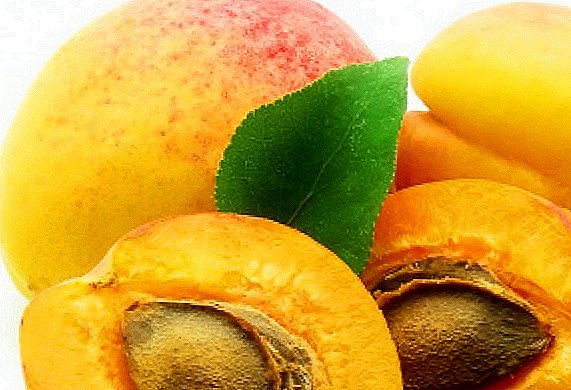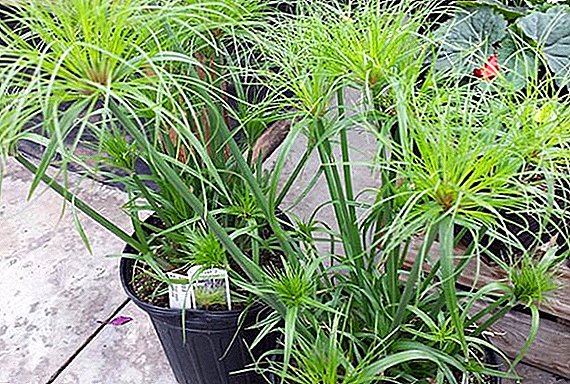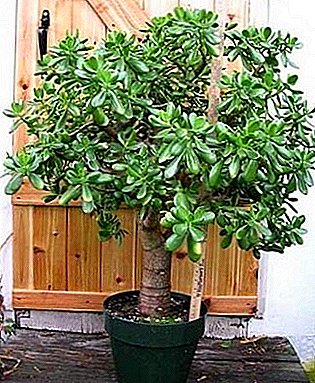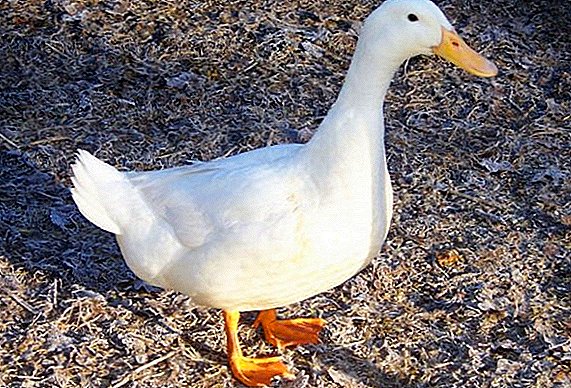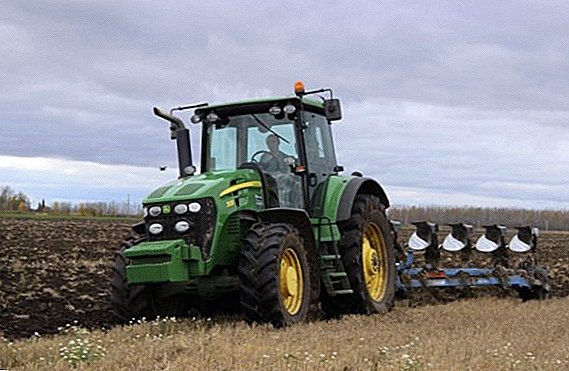 Despite the fact that greenhouses are created in order to grow crops throughout the year, often their efficiency during the winter periods of time falls quite strongly. This is due, primarily, to the insufficient coefficient of heat accumulation during cold periods due to a decrease in the average day-time air temperature and a decrease in daylight hours. This problem can be solved by equipping your greenhouse with a heat accumulator, some varieties of which will be discussed in this article.
Despite the fact that greenhouses are created in order to grow crops throughout the year, often their efficiency during the winter periods of time falls quite strongly. This is due, primarily, to the insufficient coefficient of heat accumulation during cold periods due to a decrease in the average day-time air temperature and a decrease in daylight hours. This problem can be solved by equipping your greenhouse with a heat accumulator, some varieties of which will be discussed in this article.
How it works
The basic principles of operation of any greenhouse are based on the fact that solar energy entering inside the greenhouse is accumulated there, and due to the heat-reflecting properties of covering materials that make up the walls and roof of the greenhouse, it goes out in much smaller amounts than it originally did. However, the surplus of such energy, which is not used directly by the plants themselves, is simply dispersed in space and does not bring any benefit.
Did you know? The first working prototype of a modern battery was proposed in 1802 by the Italian Alessandro Volta. It consisted of copper and zinc sheets, which were joined together by spikes and placed in a wooden box filled with acid.If we organize the collection of surplus solar energy in the greenhouse and ensure its further adequate storage and use, this will entail an increase in the productivity of its work. The accumulated heat can be used to maintain a constant comfortable level of indoor temperature at any time of the day, which will improve the germination and yield of your crops.
Learn how to properly handle a polycarbonate greenhouse in spring.An important positive factor in the construction of batteries of this type is also the fact that you do not have to spend money on various expensive energy sources, a variety of electronic components and other components required for the construction of traditional heating systems.
Types of heat accumulators for the greenhouse
All types of heat accumulators for greenhouses perform the same function - they accumulate and then transfer the sun's energy to the time interval you specify. Their main difference is the material from which the element underlying them - the heat accumulator - is made. Below is information about how they can be.
Read also how to build a wooden greenhouse, a greenhouse with an opening roof, "Signor tomato", according to Mitlayder, as well as polypropylene and plastic pipes.Video: heat accumulator
Water batteries heat
The principle of operation of batteries of this type is based on the ability of water to absorb solar energy until it reaches a temperature of 100 ° C and the beginning of the process of its boiling and active evaporation, which is rather unlikely in the conditions of solar activity characteristic of our latitudes. This type of battery is good for its low cost and ease of construction. Consumables that require updating from time to time, is also quite affordable - this is ordinary water.  Greenhouse heating scheme: 1 - heating boiler; 2 - tank - thermos; 3 - circulation pump; 4 - relay - regulator; 5 - registers; 6 - thermocouple. Among the negative aspects of these batteries it is worth mentioning their relatively low efficiency, due to the low heat capacity of water, as well as the need for constant monitoring of the level of liquid in the pool, tanks or sleeves with water, which will inevitably decrease due to its constant evaporation.
Greenhouse heating scheme: 1 - heating boiler; 2 - tank - thermos; 3 - circulation pump; 4 - relay - regulator; 5 - registers; 6 - thermocouple. Among the negative aspects of these batteries it is worth mentioning their relatively low efficiency, due to the low heat capacity of water, as well as the need for constant monitoring of the level of liquid in the pool, tanks or sleeves with water, which will inevitably decrease due to its constant evaporation.
Important! The evaporation rate of water can be significantly reduced by covering the tank or pool with water with a plastic film or sealing it in some other way.
Ground heat accumulation
The soil, which is an integral part of any greenhouse, is also capable of performing the function of a solar energy accumulator. In the daytime, it is actively heated under the sunlight, and with the onset of night, the energy accumulated by it can be used advantageously to maintain a constant temperature in the greenhouse.  This is done by the following technology:
This is done by the following technology:
- Inside the layers of soil fit the vertical layers of empty pipes of arbitrary diameter and duration.
- At the beginning of the temperature drop in the room, warm air from the pipes, heated by the ground, flows under the action of thrust outward and tends upwards, heating the room.
- The cooled air goes down, re-enters the pipes and the cycle repeats again until the ground cools completely.
Did you know? The most popular modern material for the greenhouse is polycarbonate. Its active use has reduced the average weight of the greenhouse by 16 times, and the cost of construction - 5-6 times.This method of heat storage requires the use of more expensive materials than the previous one, but at the same time once having established such a system, you no longer have to constantly check the adequacy of its work. It does not require absolutely any consumables and additional materials and is able to provide a constant temperature in the greenhouse for a sufficiently long period.
Learn about all the intricacies of growing cucumbers, tomatoes, eggplants, sweet peppers in the greenhouse.Video: how to make a ground heat accumulator
Stone batteries heat
This type of battery is the most effective, since the stone has the highest heat capacity among all the materials considered in the article. The principle of stone batteries is that the sunlit areas of the greenhouse lined with stone, which heats up during the day, and with the onset of the night begins to give the accumulated heat to the room.  1 - stone heat accumulator under the greenhouse with open air circulation; 2 - native heat accumulator made of stone; 3 - direct stone heat accumulator; 4 - accumulation of heat energy by stones laid free. The negative aspect of the application of this method of heating is the high cost of the material, especially tangible if you want to equip an aesthetically acceptable greenhouse with a beautiful appearance. On the other hand, a battery built according to this principle has an almost unlimited service life and does not lose its effectiveness over time.
1 - stone heat accumulator under the greenhouse with open air circulation; 2 - native heat accumulator made of stone; 3 - direct stone heat accumulator; 4 - accumulation of heat energy by stones laid free. The negative aspect of the application of this method of heating is the high cost of the material, especially tangible if you want to equip an aesthetically acceptable greenhouse with a beautiful appearance. On the other hand, a battery built according to this principle has an almost unlimited service life and does not lose its effectiveness over time.
Water batteries heat with their own hands
The most popular and easiest in the construction of a heat accumulator for a greenhouse is a water accumulator. Next, we will look at some of the easiest ways to build such a closed type battery.
If you have just decided to acquire a polycarbonate greenhouse, it will be useful for you to study all the design features of these greenhouses; find out what kind of foundation is suitable for this greenhouse, how to choose polycarbonate for your greenhouse, and also how to make a polycarbonate greenhouse with your own hands.
Sleeve type
This unit is good simplicity of its facilities, because all you need for it is an elastic sealed sleeve and water. Approximate algorithm for the production of this battery:
- Acquired a sealed sleeve (preferably black) of the required length and width, which can vary depending on the length of the beds and the type of plants grown, is placed on the bed in such a way that, when filled, it does not injure the plants.
- Then one of the edges of the sleeve is incised and water is poured into it so that it fills it as tightly as possible.
- Next, the sleeve is re-sealed by twisting its edge with a string, wire, tape or yoke.
 The resulting unit not only prevents the death of plants in the greenhouse in winter, but also has a positive effect on the growth and development of crops during the period of active spring-summer vegetation, which is confirmed by the observations of many gardeners and gardeners.
The resulting unit not only prevents the death of plants in the greenhouse in winter, but also has a positive effect on the growth and development of crops during the period of active spring-summer vegetation, which is confirmed by the observations of many gardeners and gardeners.Capacitive type
This type of heat accumulators has a slightly lower efficiency due to the fact that the sun's rays cannot penetrate deep into the thickness of the barrel, which represents its main component. However, at the same time, it is much easier to refill it with water (when such a need arises) than the previous form.
Read more about how to treat the premises and the ground of the greenhouse after winter from pests and diseases.
They are constructed according to this algorithm:
- Under the beds are placed barrels of arbitrary size so that they get sunlight, and you have the opportunity to pour water into them when needed.
- The lids of the barrels open, as much water is poured into them. Ideally, there should be no air in the barrel.
- Next, the lid tightly closed and subjected to additional sealing, the appearance of which depends on the design of the barrel and the planned frequency of updating the contents.
Important! To increase the efficiency of such a unit, it is recommended to paint the inside of the barrel with black paint.
 Using the information obtained from this article, you can get a bountiful harvest in your greenhouses throughout the year. However, it should be remembered that the primary role in the efficiency of the greenhouse is played not by the presence of one or another kind of heat accumulator in it, but by the features of its design and a competent approach to the design.
Using the information obtained from this article, you can get a bountiful harvest in your greenhouses throughout the year. However, it should be remembered that the primary role in the efficiency of the greenhouse is played not by the presence of one or another kind of heat accumulator in it, but by the features of its design and a competent approach to the design.Reviews from the network






